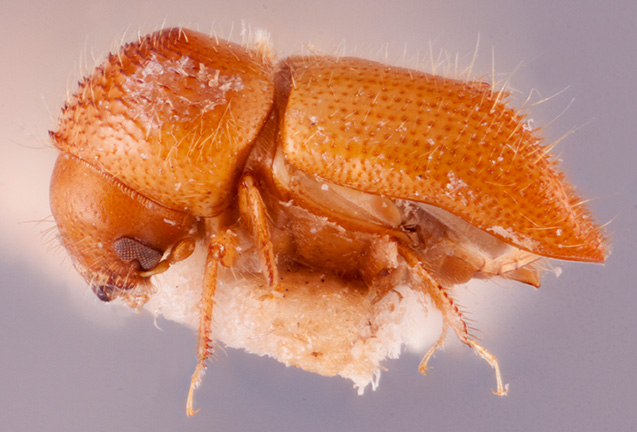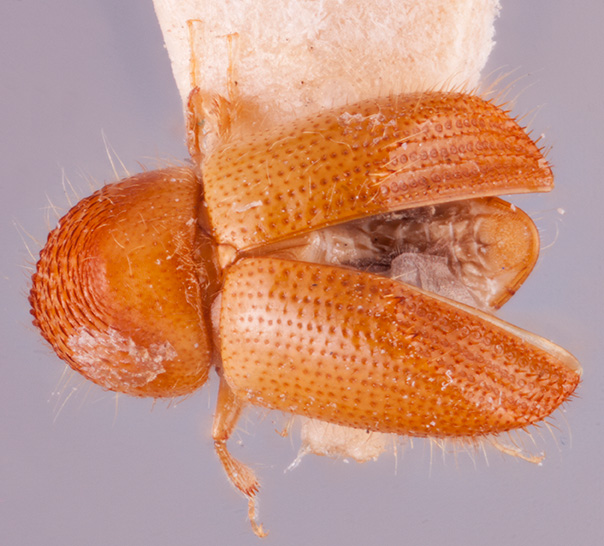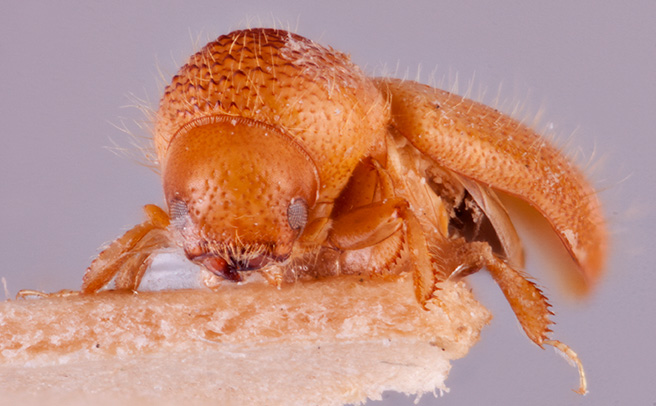Anisandrus geminatus
|
Anisandrus geminatus lateral; R.K. Osborn |
|
Anisandrus geminatus dorsal; R.K. Osborn |
|
Anisandrus geminatus declivity; R.K. Osborn |
|
Anisandrus geminatus frontal; R.K. Osborn |
Taxonomic history
Xyleborus geminatus Hagedorn, 1904: 126.
Amasa geminata (Hagedorn): Wood and Bright, 1992: 683.
Anisandrus geminatus (Hagedorn): Beaver and Liu, 2018: 537.
Diagnosis
2.9−3.2 mm long (mean = 3.03 mm; n = 3); 2.31−2.37 times as long as wide. This species can be distinguished by the mesonotal mycangial tuftmycangial tuft:
tuft of setae that denotes the mycangia exterior opening
 the length of the scutellumscutellum:
the length of the scutellumscutellum:
a shield-like sclerotized plate located at the midpoint of the elytral base
; elytralelytral:
pertaining to the elytra
discdisc:
the flat central upper surface of any body part (e.g. pronotum and elytra) flat; declivitaldeclivital:
flat; declivitaldeclivital:
pertaining to the elytral declivity
interstriae punctatepunctate:
set with fine impressed points, appearing as pin pricks
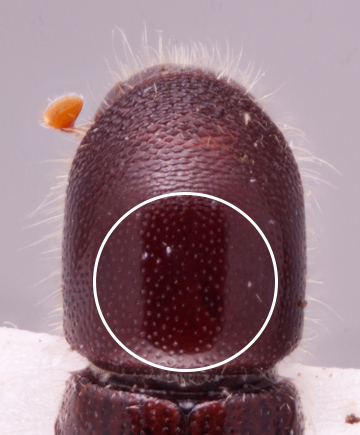 ; and posterolateralposterolateral:
; and posterolateralposterolateral:
relating to end of the side part/portion
 margin costate to interstriaeinterstria:
margin costate to interstriaeinterstria:
longitudinal spaces along the elytra between the striae, which is not as<br />
impressed and bear smaller punctures.
 7; declivitaldeclivital:
7; declivitaldeclivital:
pertaining to the elytral declivity
face concaveconcave:
appearing hollowed out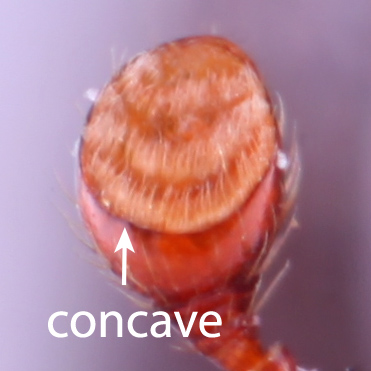 ; declivitaldeclivital:
; declivitaldeclivital:
pertaining to the elytral declivity
interstriae 2 and 3 armed with a small sharp incurved spinespine:
an elongate projection of the exoskeleton that is longer than its basal width at the summitsummit:
at the summitsummit:
highest point, used for pronotum and elytra, denotes the peak between pronotal frontal slope and disc, and between elytral disc and declivity ; and declivitaldeclivital:
; and declivitaldeclivital:
pertaining to the elytral declivity
interstriae bearing erecterect:
pertaining to setae that have their apices directed away from the body and appear straight
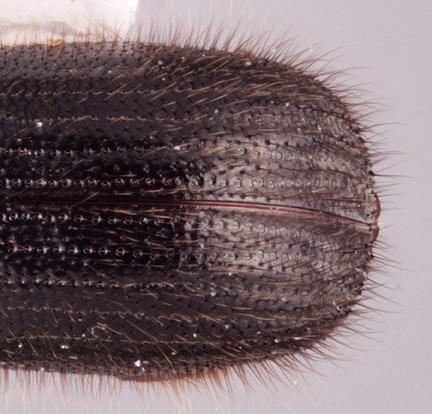 pointed scalesscale:
pointed scalesscale:
a flattened seta
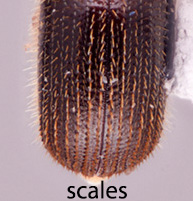 .
.
May be confused with
Anisandrus apicalis, A. congruens, A. cristatus, A. niger, and A. sinivali
Distribution
India (West Bengal), Nepal
Host plants
unknown (Smith et al. 2020bSmith et al. 2020b:
Smith SM, Beaver RA, and Cognato AI. 2020b. A monograph of the Xyleborini (Coleoptera, Curculionidae, Scolytinae) of the Indochinese Peninsula (except Malaysia) and China. ZooKeys 983: 1-442. https://doi.org/10.3897/zookeys.983.52630)
DNA data
specimens not available for sequencing

